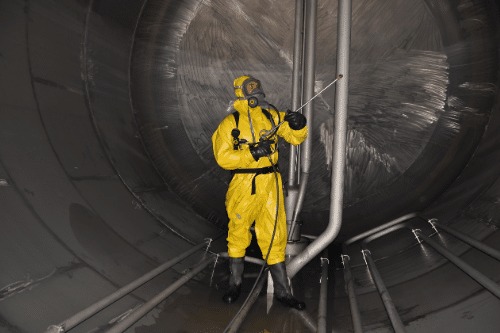
Usually, it is recommended to clean your water tank at least once a year (preferably every six months). If you live in a community where a larger volume of sediment comes along with the water, cleaning more often is suggested. Do it yourself cleaning is suitable if you have smaller tanks or if you are an experienced cleaner. Read more about Williamson valley septic tank pumping here. However always take safety precautions and follow proper cleaning procedure. Overhead tanks are commonly found on the top of residential and commercial buildings .They store the water which are flowed from underground water sumps . Cleaning these overhead tanks include the process of draining, scrubbing, disinfecting, rinsing and maintaining. While scrubbing, we need to pay special attention to corners in our water tank.
The irony is that people often invest a lot of money in buying expensive water purifiers and other filtering equipment, but neglect entirely their water storage tanks’ hygiene. So how can you ensure that sludge, hard deposits, and other forms of contamination don’t impact the effectiveness of your industrial chemical tanks?
Types of Water Tank and Their Cleaning Requirements
A regular clean up is required to ensure the quality of your water, but this usually requires draining out the tank, which of course, can result in a lot of water wastage. However, cleaning your tank doesn’t necessarily have to be this wasteful. By siphoning your water storage tank, you’ll be able to conserve water while maintaining the cleanliness of your storage unit. Fish are very sensitive to chemicals, including household soaps, so it is important to know how to clean a fish tank correctly.
Water tanks are a great help to us as they fulfill our water-related needs by saving water for us. We should ensure that the water inside stays clean and bacteria-free. There is a need of cleaning the water tank at least once in six months. During this period, we should keep watch on it if the algae, silt and bacteria, and other microorganisms are developing over there. Cleaning a water tank is important and essential for several reasons.
During the cleaning process, your pet fish should not swim up the gravel siphon. If they try to, quickly lift the siphon above the water line, causing the water to pour back into the tank.
If the tank is located in direct sunlight and outside, this can also cause tank cleaning frequency to increase. Dark colored tanks placed out of the sun will require the least maintenance and may only need cleaning once every two years. Water tanks kept or used in cooler environments will not need cleaning as often compared to those in warmer or tropical locations. If the algae won’t come off by scrubbing, bring a pot of water to a boil, turn off the heat, and then place the items in the hot water for 20 minutes. The boiling water will both kill the algae and loosen the residue so that it’s easier to scrub off. Non-porous decorations can also be soaked in cold water with bleach diluted to a five to 10 percent solution before scrubbing them clean under a running faucet. Making partial water changes ensures that the bacteria colonies, which are essential for your aquarium, are not removed or damaged.
Step 1: Test the Water Quality
The author likes to start the tank cleaning process while working on other projects as long as each process can be monitored properly. The time is largely affected by the size of the tank and only experience will help the cellar crew in this estimation.
For your safety, do not use electric lights or power equipment inside the tank. For more specific cleaning instructions based on the size and type of storage tank you own, follow the guidelines set forth by the World Health Organization. Necessary Safety Clothes – Before you start cleaning you have to wear some safety gears like gloves, masks, eye protection to shield yourself from contaminants and cleaning chemicals.
For your safety, avoid doing this step in any spot near to where your septic system may be buried. Prepare a tablespoon of bleach per gallon of water and scrub the solution on the interior walls. If it’s not possible, use a floor mop with an adjustable handle. – Depending on your experience and the level of contamination, cleaning a gas tank can take anywhere from 2-4 hours.
Once the process has been allowed to work, one may turn off the pump and wait 4-5 minutes for the extra dripping of the cleaning solution to cease. Continue to monitor the process from a distance and always keep your ears on the operation. The sound of a tank cleaning can be just as important as visually watching the operation. This piece should be placed were it will strategically spray water back toward the top of the tank to give maximum distribution of the water and/or cleaning solution. Overriding the system may be done by moving the temperature dial setting all the way up so the solenoid will not engage, thus preventing cooling from circulating through the tanks jackets.






